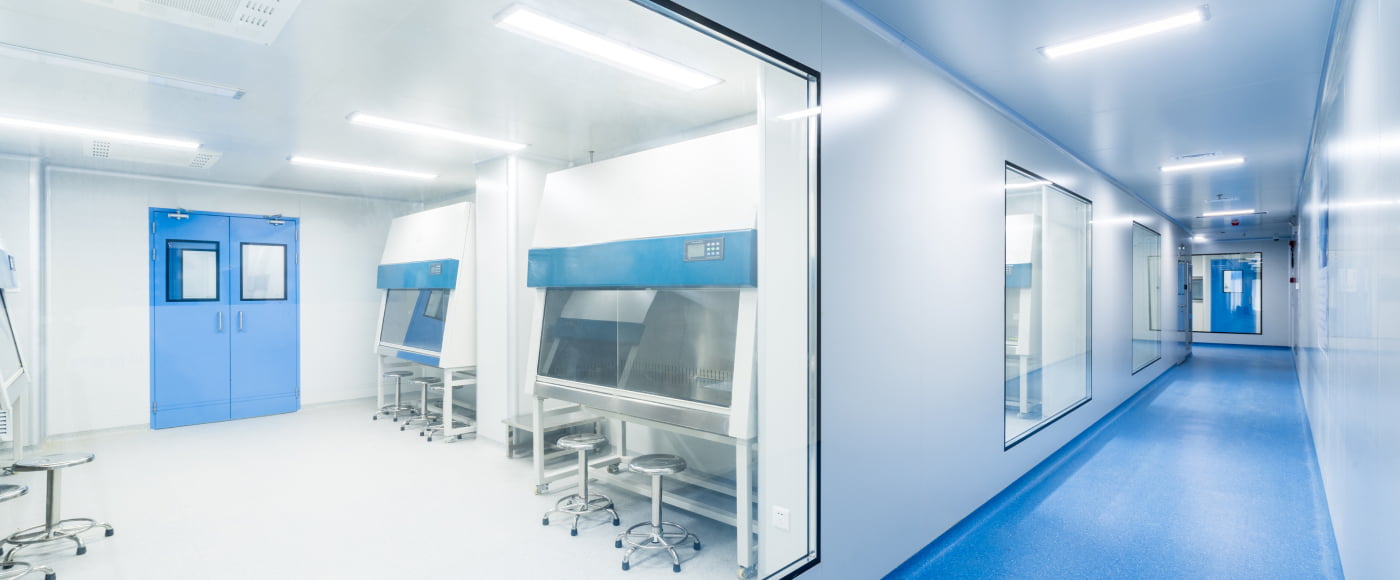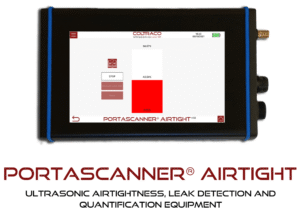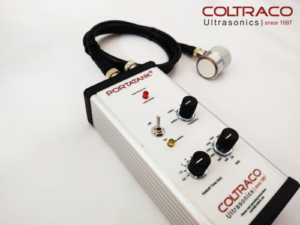As built environment standards evolve and the drive for energy efficiency intensifies, airtightness testing has become critical to building compliance and integrity.
At Coltraco, we work at the forefront of ultrasonic airtightness testing, and we’re often asked how this compares to more traditional methods like blower door testing.
This guide’ll review the key differences and explain why noninvasive acoustic testing redefines how buildings are tested for air leakage.
What is Blower Door Testing?
Blower door testing is one of the most commonly used methods to assess building air leakage. The process involves mounting a large fan into an external doorway and depressurising or pressurising the internal space.
The aim is to measure the airflow required to maintain a set pressure differential between inside and outside. Any variations in pressure help identify the volume of air escaping or entering through leaks in the building envelope.
The data collected during a blower door test is typically used to calculate the air changes per hour (ACH) at a given pressure (usually 50 Pa). This can help confirm whether a building meets relevant airtightness regulations like the UK’s Part L of the Building Regulations.
What is Ultrasonic Airtightness Testing?
Ultrasonic airtightness testing is a modern alternative that uses high-frequency sound waves to detect leaks. At Coltraco, our approach relies on an ultrasonic transmitter placed within a closed space.
The transmitter emits a consistent ultrasonic tone, and our handheld receiver is used externally to detect any sound escaping through leakage points.
Because the sound only escapes through unsealed gaps or breaches in the structure, we can pinpoint leak locations quickly and without disrupting the building’s environment.
This makes ultrasonic air-tightness testing non-invasive, accurate and exceptionally efficient.
How Do the Two Methods Compare?
The blower door method and ultrasonic testing aim to identify air leakage, but their methods and levels of precision are vastly different.
Blower door testing is quantitative. It tells you how much air is leaking, but not always where. It also requires sealing and vacating the entire building (or a large zone), which limits its practicality for certain premises, especially data centres, secure facilities, healthcare sites, or heritage buildings where depressurisation is disruptive or unsuitable.
In contrast, ultrasonic testing offers a qualitative, targeted approach. Rather than measuring air volume loss, it allows us to identify exact breach locations, without altering room pressure or interrupting normal operations.
This is especially useful in live buildings, occupied spaces or sensitive environments where traditional depressurisation could cause damage or safety risks.
Why We Prioritise Non-Invasive Acoustic Testing
At Coltraco, noninvasive acoustic testing should be the new standard for air leakage detection.
We’ve developed ultrasonic technology that works precisely and reliably without requiring extensive setup, room clearance, or structural alteration.
Our systems are routinely used in buildings that would be impossible to test using blower door methods, such as server rooms, operating theatres, and sealed enclosures.
Speed is also a critical factor. Blower door tests can take hours due to setup, depressurisation and diagnostics.
Our ultrasonic airtightness testing can often be completed in a fraction of the time, with minimal preparation and instant on-site feedback.
The Safety and Practicality Divide
One of the most overlooked issues with blower door testing is the requirement to control external environmental factors.
Wind, weather, temperature and pressure fluctuations can significantly impact the accuracy of test data.
In contrast, ultrasonic testing is independent of external conditions; our instruments function effectively regardless of outside temperature or airflow, making them more reliable in variable climates or during phased construction.
The blower door method often introduces operational risks, especially in pressurised zones or facilities housing sensitive equipment.
By contrast, ultrasonic testing presents no such risks, as it requires no manipulation of the building envelope or pressure system.

Where Each Method Fits Best
Blower door testing is not unnecessary; it’s useful for overall performance benchmarking in standard commercial buildings or domestic properties where full access and control are possible.
However, the method begins to fall short where precision, speed, or operational continuity is required.
Ultrasonic testing is ideal for:
- Buildings that must remain operational during testing
- Live electrical or data environments.
- Heritage structures where structural disruption is unacceptable
- Facilities requiring regular, repeatable inspections
- Spaces that demand targeted diagnostics over volumetric metrics
Acoustic testing is the more innovative approach for clients who want to know more than just that a leak exists; they need to know exactly where and how to fix it.
Our View on the Future of Airtightness Testing
With energy performance standards tightening and sustainability targets rising, the need for accurate, efficient and minimally disruptive testing will only grow. Ultrasonic technology offers the ideal solution, particularly when designed to our rigorous standards.
Our systems are already being used worldwide to provide a more transparent, safer, and practical approach to airtight testing.
Whether improving building energy efficiency, verifying compartment integrity, or supporting regulatory compliance, acoustic testing is a transformative tool that removes the traditional limitations of blower door systems.
Why Choose Coltraco for Ultrasonic Airtightness Testing?
We don’t simply supply acoustic equipment. We engineer systems backed by scientific principles and deliver ongoing support to help our users make informed, confident decisions.
Our ultrasonic airtightness testing systems are designed for ease of use, precise readings, and practical deployment across various building environments.
What sets us apart is not just the capability of our devices, but the integrity of the insights we provide. We understand that the cost of missed leakage or false readings can be high in many critical applications.
That’s why we’ve committed to raising the standard for airtightness testing through innovation, education, and hands-on customer support.
Speak To Coltraco Ultrasonics For Air Tightness Testing Today!
If you’re currently using blower door testing or looking for a better way to identify air leakage, speak to our team today.
We’ll help you explore how ultrasonic airtightness testing can improve precision, reduce disruption and support the long-term integrity of your building or asset.
Let’s move beyond traditional testing. Let’s make acoustic the new standard.






